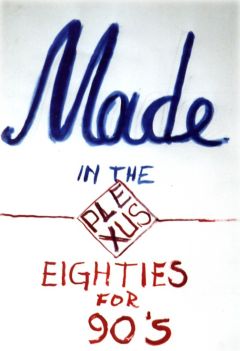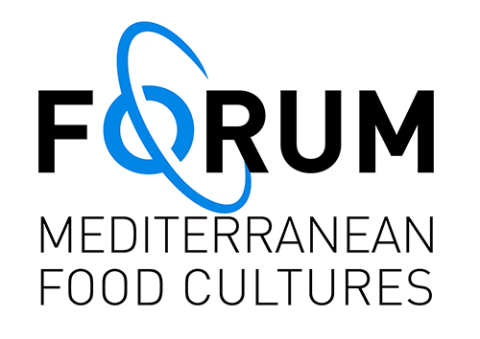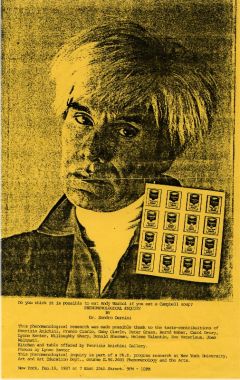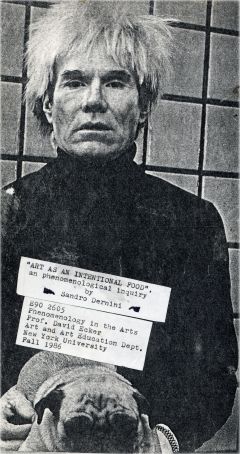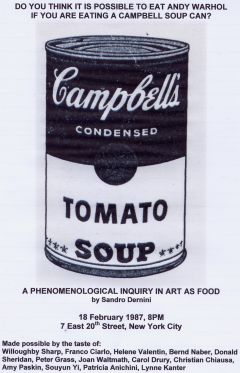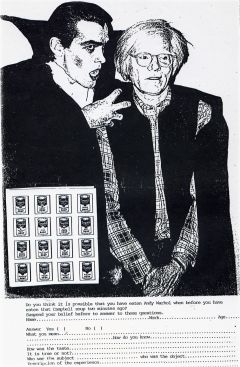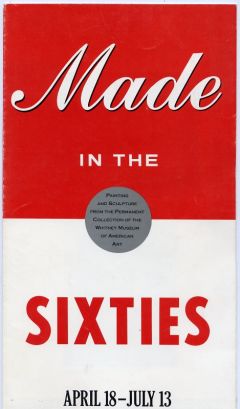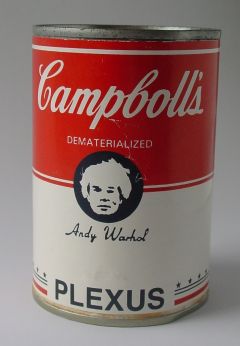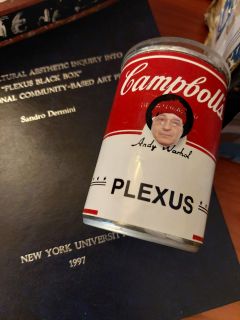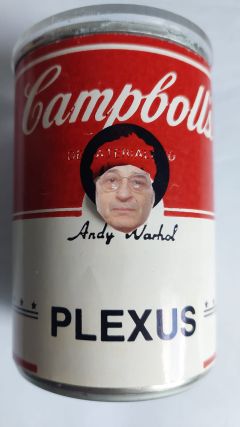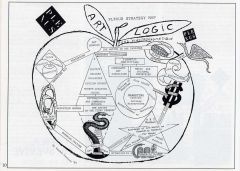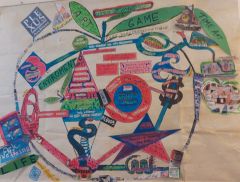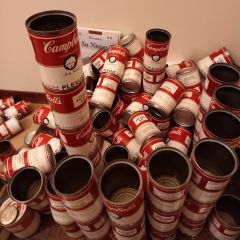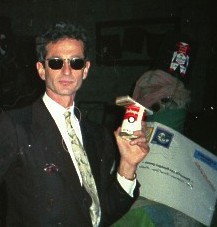WE ARE BECAMING CANNIBALS
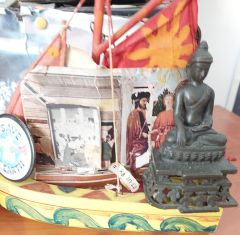
The body, mind and senses are no longer the only means by which we experienced the world
THE DEMATERIALIZATION OF ART AND REALITY
DO YOU THINK THAT IT IS POSSIBLE TO EAT ANDY WARHOL DEMATERIALIZED BY EATING A PLEXUS CAMPBOLL'S SOUP CAN LIMITED EDITION?
First, I Introduce myself, I am Plexus 23s , aka Dr. Sandro Dernini, the author the 100 Plexus Campboll's Soup Cans Limited Editions.
I am a Plexus insider, as well as, a Plexus outsider.


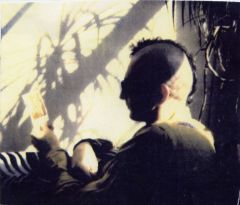
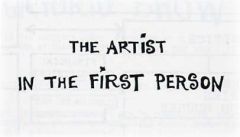
I have also a double cultural identity: “Sarda” (from Sardinian) and Italian. My nationality is Italian but my culture is "Nuragic", the stone and bronze age culture of Sardinia.
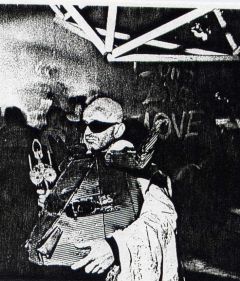

As a scientist, I developed and studied Plexus as a Community-Based International Art Project. It was an aesthetic phenomenological inquiry that I conducted for my NYU Ph.D in Art Education at the Dept.of Art and Art Professions, that I started in 1986 and completed in 1997.
In 1974, immediately after my University Degree (Laurea) in Bioogical Sciences at the University of Cagliari (Sardinia), I was invited by prof. Carlo De Marco, director of the Biochemistry Institute of the University of Cagliari to join him in Rome at the Sapienza University, as assistant researcher to analyze quantitative and qualitative separations in sulfur and selenium aminoacids. During this period (1974-79), within the students and universities protests I became more awared about the "Ivory Towers" of the Academia, separated from the community and the reality of every day life.
I became more concerned on the scientific limitations of the Western Medical School.
My 100 Plexus Camboll's Soup Cans Limited Editions are the outcomes of an aesthetic phenomenological performace that I did in New York, on 18 February 1987, at the Patrizia Anichini Gallery, entitled "Do you think it is possible to eat Andy Warhol if you are eating a Campbell soup? It was my second aesthetic inquiry for my PhD course E90.2605 on Phenomenology and the Arts at New York University, directed by prof. David W. Ecker.
I was inspired by the symposium The Dematerialization of Art, organized the day after at New York University by Angiola Churchill and Jorge Glusberg, co-directors of ICASA (International Center for Advanced Studies in Art), where I was working as a graduate assistant.
Heisenberg's Uncertainty Principle of 1907 with its recognition that the behaviour of the atom could not be predicted proposed a new reality that the artist has only begun to grapple with. What is the status of art if a discernible reality no longer exists?
Advanced technology has vastly expanded the human sensorium. What results from this increase of information largely depends on the interpretative abilities of the artist.
Scientific breakthroughs have presented not just a new version of reality but also of time and space.
What significance this will have for art cannot yet be said but we are clearly on the brink of the most extraordinary leap in human perception
( From the brochure of the symposium on The Dematerialization of Art, International Center for Advanced Studies in Art, New York University, 1987)
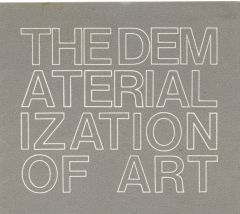
Participants artists Willoughby Sharp, Helen Valentin, Bernd Naber, Franco Ciarlo, Donald Sheridan, Peter Grass, Lynne Kanter, Souyun Yi, Carol Drury, Amy Paskin, Christian Chiansa, Patrizia Anichini, and myseld, ate a Campbell soup. Only Joan Waltmath refused to eat it.
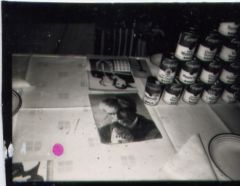
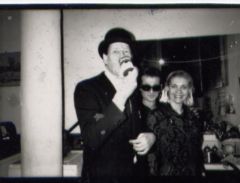
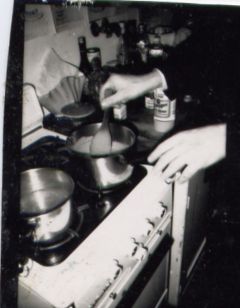
After, they answered to this questionnaire for the NYU Ph.D. phenomenological inquiry: “Do you think it is possible that you have eaten Andy Warhol when before you have eaten that Campbell soup two minutes ago? Suspend your belief before to answer to these questions. Answer: yes or no? What you mean? How do you know? How was the taste? Is it true or not? Who was the subject? Who was the object? Description of the experience”
On the table, Andy Warhol's photos were discplaced together with catalogues of the exibition "Made in the Sixties", held in that period at the Downtown Branch of the Whitney Museum, with brochures of the NYU ICASA Dematerialization of Art Symposium placed near the plates, as napkins, in order to be read during the digestion before to fill a questionnaire, placed in front the plate. Crystal glasses were full of italian red wine.
From the analysis of the questionnaires, it resulted that the majority of participants believed they “ate” Andy Warhol dematerialized.
Few nights after, Andy Warhol died.! We were shocked about it.
At the opening of the Dematerialization of Art symposium at New York University, Lenny Horowitz and Stephen Di Lauro, two Plexus historical players, by reporting from the floor the Sandro's performance, questioned about the potential dematerialization of Andy Warhol.
Nam June Paik, among the speakers, believed possible that Andy Warhol had been dematerialized through the intentional act of eating his commodity art symbol.The ICASA speakers were Jean Baudrillard, Donald Kuspit, Vito Acconci, Nam June Paik, Judy Barry, Dennis Oppenheim, Billy Kluver, Nancy Holt, Paul Taylor, Bruce Breland, Flor Bex, Rene Berger, Eika Billeter, Alan Bowness, Julie Lawson, Hervè Fischer and George Chaikin.
in New York, in February 1988, on the occasion of the first anniversary of my 1987 dematerialization performance of eating Andy Warhol, I organized the happening “An Art Redefinition of a Campbell Soup Can”. I made it as a Plexus report to the Lower East Side community, about developments of the Plexus journey of the art slaves boat, two years after its departure from the “Eve” art opera, its landing in 1987 in Sardinia and its planned arrival at the House of the Slaves of Goree, Dakar, in December 1988.
I staged it inside the dry swimming pool in the basement of C.U.A.N.D.O. for a historical group shot to be recorded for the first episode of a new Plexus Snub Cable TV Show by Fran Duffy. The Andy’s Plexus recalling event was again inspired by a second ICASA symposium, The Redefinition of Art in the Collision of Cultures in the Post-Modern World, held in the same period at New York University at New York University.
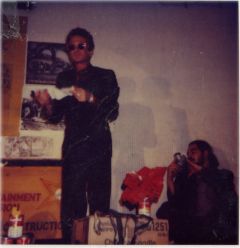
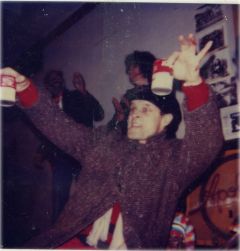
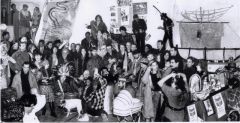
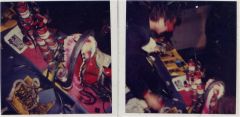
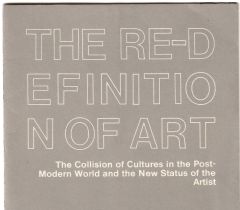
In September 1988, for my birthday, with a party in a loft in Soho, I presented 100 Plexus Campboll's Soups Cans Labels, Made in the 80's for the 90's, as 100 Limited Editions, printed for me by Ram Studio of Maggie Reilly.

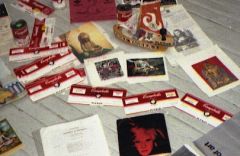
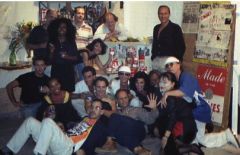

What does a PLEXUS Can look like?
It looks like an Andy Warhol's Campbell soup can, if it is exposed to a beholder of the artworld. Its label is red and white. It has a central circle with the words "Dematerialized Andy Warhol" and Andy Warhol's face which hold the center of attention. On its bottom the word PLEXUS. The "e" of Campbell is changed to an "o". On top of the can is glued-a penny, painted in red.
It has a cylindrical form, balanced symmetrical design, a spatial organization with rectangular units, with written messages: "Directions: Eating Art", "Ingredients: History of Modem Art. Volume One: FoodArt International".
“DIRECTIONS: EATING ART and "INGREDIENTS : HISTORY OF MODERN ART, VOLUME 1- FOODART INTERNATIONAL", as reported in 100 Plexus Camboll's Soup Can Labels Limited Editions, as Time Caspules 100/100.
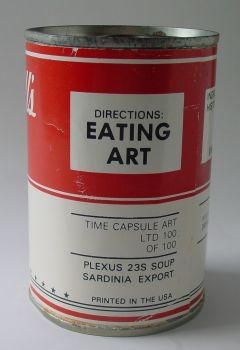
DIRECTIONS-EATING ART:
EATING THE HISTORY OF PLEXUS ART JOURNEY 1982-2024, with Art Love
The expectation as manipulation of mental imagery is a central referential step of the analysis. Changing "e" to "o" in the word Campboll’s prevents the Plexus Can being confused with a Warhol's can and with a simple Campbell’s can.
Both light and distance influence the reading of the outside codes of the object whether it is read as "e" or "o", whether you see or you do not see the glued-on penny painted as money art. The angle from which the object is viewed determines the perception of the object either as an original work of art by Plexus, by Andy Warhol or a simple Campbell can.
What is inside this can is also an element of ambiguity of the work under study. How will you open it? The curiosity to open it, and the motivation to do it, will create the need to invent the opener, a method of reading, a system of intelligibility.
On the back bottom of the label, is printed "Time Capsule Art, LTD 100, PLEXUS 23s Soup, Sardinia Export. Printed in the USA, Ram Studio Inc. Designer R.Kern. New York 5/88 AD".
What does a Plexus Campboll’s Soup Can contain?
It changes from can to can. It depends upon the related circumstances under which a Plexus Can is made. The expectation, the beholder's share, if the person is related to the art world, will transform an ordinary object, a Campbell Soup Can, into an artistic object, a PLEXUS Campboll’s Soup Can.
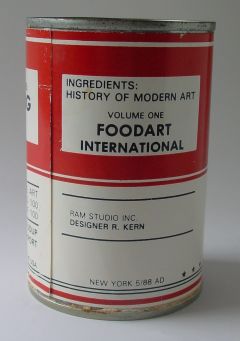
INGREDIENTS:
THE HISTORY OF MODERN ART
THE HISTORY OF THE PHD NEW YORK UNIVERSITY AESTETIC INQUIRY INTO THE PLEXUS BLACK BOX BY SANDRO DERNINI
The beholder's projection completes the missing steps, as an artistic interplay between what can be conceived and what is perceivable and observable: an aesthetic illusion created by the power of suggestion of our mental set. Plexus Can functions within a ritual art performance environment depending upon the community of beholders. Its interpretation is not static. It is formed by the momentum of the rhythm of our experience and of its correlations. Each reader has his/her own angle of interpretation depending upon his/her personality, education, and culture. As Gadamer points out, no method can transcend the interpreter's own historicity.
In November 1988 for the Plexus Serpent Art Co-Opera Act 2, at New York University, I created my first Art Pyramid installation with original Campell's Soup Cans and my new Plexus labels Limited Edition.
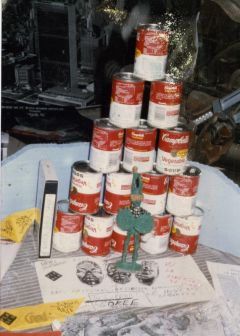
Since then, up to 2024, I created several art installations with the shape of Pyramids, reppresenting the ART STARS MARKET SYSTEM and Nuragic Towers, repprenting the Art Communities, with 100 Campbell's Soup Cans. I glued my 100 Plexus Labels Limited Editions.
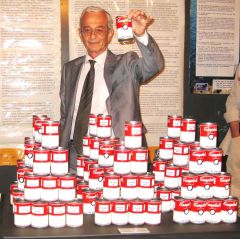
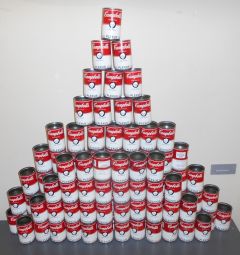
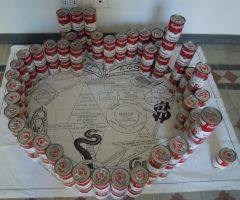
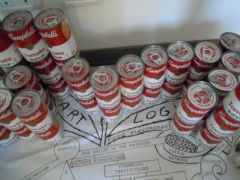
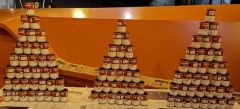
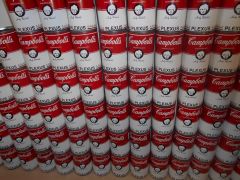
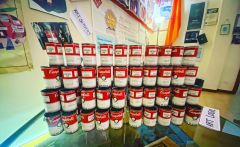
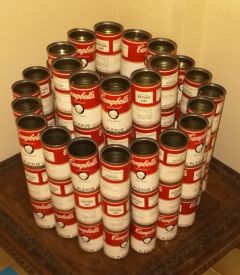
I tried many times to understand how to fill these Plexus Cans but it was too much for me, by being too much involved into it.
In 2025, after 37 years, since when in 1988 I conceived the 100 Plexus labels,
I was able to put myself inside this number zero of the 100 Plexus Camboll's Soup Cans Limited Editions, only by ARTLOVE, as a birthday homage, for Glaucia Coelho DemenjourIn the number zero for Glaucia Coelho Demejour of the 100 Plexus Camboll's Soup Can Limited Editions.


I was forced by ARTLOVE to define how to fill these Plexus cans by taking into account the history from where they were coming from, in which I was part, in the first person, as an insider as well as an outsider.
I started I write in the first person the Plexus storyline made in the 80's, that I alwayes I refused to do!!
MI DENTRO/MI FUORI
MYSELF INSIDER/MYSELF OUTSIDER
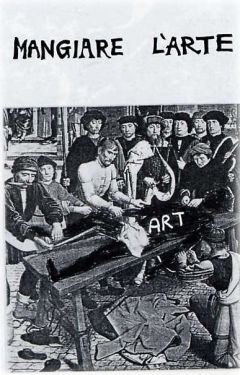
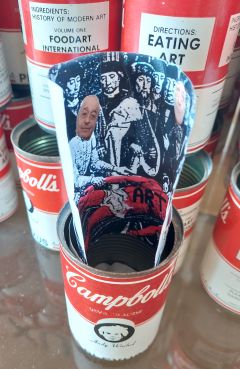
I placed myself for Art Love inside this Can, watching myself as a vivisected body of art, subject and object at the same time, with on the botton visible an original photo of mine made by Lynne Pamela Kanter in 1981 when I moved to New York City.
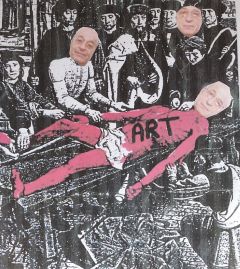
On the internal side of the can, I glued a cent coin painted in yellow as money art, glued next to the cover of the 1987 Dematerialization of Art Symposium at New York University,. Next to them I glued a collage of a middle ages vivisected body of an alive prisoner opened by the medical school, with different faces of myself watching the opening.
On the bottom, original photo of Sandro made by Lynne Pamela Kanter
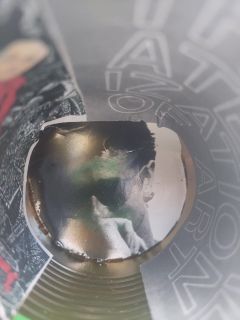
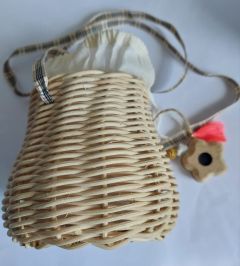
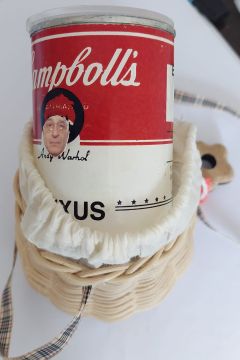
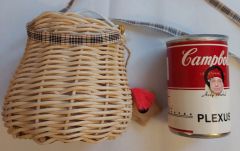
The number zero Plexus can I packaged inside a wicker basket handmade by Fabrizio Perini, the basket maker of Sorano, Tuscany Maremma, where it is now located Plexus International Archives.

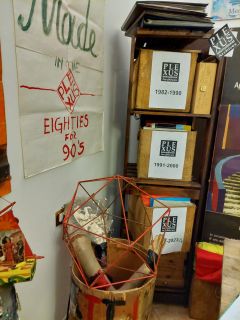
The Archives meticulously document the events and activities of Plexus Internaional, from 1982 to 2024, with a collection of original papers by Plexus artists and historical artworks, such as the Plexus Metr'Art, a monumental contemporary artwork measuring 390.94 meters, created from 2004 to 2019, including 935 contributions from 469 artists worldwide.
Plexus International Official Archives can be visited by appointment and overnight stay on site, at special discount fare, at the DJOUR'S Guest House of Glaucia Coelho Demenjour.

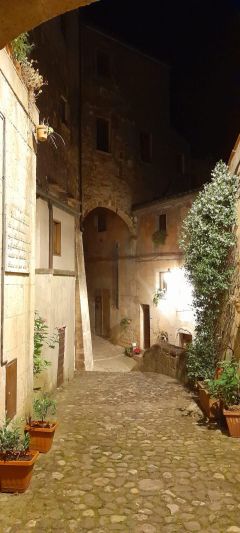
TIME CAPSULE NUMBER ZERO:
1981 WHEN SANDRO DERNINI LANDED IN NEW YORK CITY,
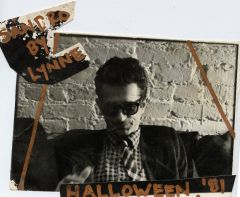
When I moved to New York, living in a loft in Broome Street, in Soho, I started to give great parties to meet people to start to know the cultural and artist life in New York. Then, I conceived the creation of the NYU Center for Italian Contemporary Culture, and, as executive director, I organized the programme "THE ARTIST IN THE FIRST PERSON", with artists organizing and producing their own presentations.
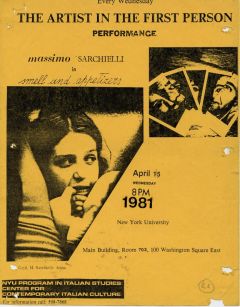
Interpretations of clues are made by systems of intelligibility which are made by codes. Clues are supposed to be read as information. One of these clues is under "Direction: -Eating Art". Second of these clues is under "Dematerialized Andy Warhol" First question, how do we eat art, and if we eat art how do we digest it? Second question, how do we eat Andy Warhol dematerialized, and if we eat Andy Warhol how do we digest him dematerialized?
As result from my deconstruction of eating and digesting a Plexus Campboll's Soup Can a large quantity of images and texts it was produced which may seem disconnected but instead very interconnected as frames of references of other references, direct verbal and pictorial quotations to be accounted in a proper interpretation.
The Plexus group photo compressionist process actually contains duplicates of other group photos, which contain duplicate of other photos of Plexus historical art journey and so on more; The first frame also refers to the second frame through showing it as in a frame, etc., might then be said to quote it directly.
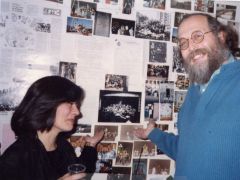
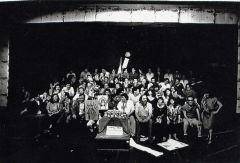
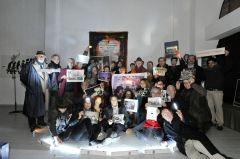
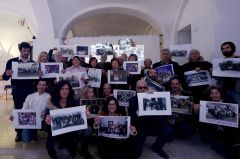
The Plexus Can is of an intentional work of art made by frames of art references and human transformations.
The reading of a Plexus Can raises the problem of measuring an object /subject that is still evolving in non-linear movement and is not in equilibrium.
The interpretation of its pictorial representation has gradually shifted from the object to the subject. What is seen depends upon who is looking at it.
The necessity to create or to invent a new object or substance and related system of intelligibility depends on the momentum of that specific epoch. Just as there was a need to invent a food with a long shelf life. Plexus Can was invented as an original work of art, an attempt at art with a long shelf life.
The Plexus Campboll’s label is only an original dress, is used, as Walter Benjamin argued in his essay The Work of Art in the Age of Technical Reproducibility. to be confronted by the beholder in particular circumstances of time and place. To view a whole Plexus Can out of its intended context is to see it distorted. It is an original work of art that is not possible to experience in another time and place as it was intended to be experienced. The reading of a Plexus Can raises the problem of measuring an object /subject that is still evolving in non-linear movement and is not in equilibrium. The interpretation of its pictorial representation has gradually shifted from the object to the subject. What is seen depends upon who is looking at it.
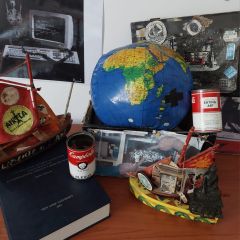
To manage my challenge to fill the 100 Plexus Can Limited Editions and to define how and with what to fill them, I applied again my phenomenological approach of my PhD. reflective and refractive to identify the “Directions” and "Ingredients" for eating a Plexus Campboll’s Soup Can that contains also my studies as a Ph.D art education student at the New York University.
Therefore, to start to fill the number zero of my 100 Plexus Campboll's Soup Cans Limited Editions I applied my studies as NYU PhD. art student.
I started with my first 1986 NYU course on Phenomelogy in the Art by Prof. David W. Ecker for which I did the aesthetic inquiry on Eating Andy Warhol. Then I used my class paper "Named it as Artslaver-ISMS that I wrote for 1988 NYU Course on Aethetic Inquiry, again by prof. David W. Ecker. I studied art definitions, categories, styles, artworld and its priviledge of conferring the status to be an "Artist".
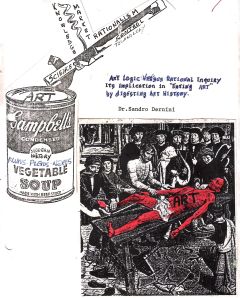
ART DEFINITIONS, CATEGORIES, AND ART MARKET:
NAMED IT "ART-SLAVER-ISM"
Plexus Can is an interplay "between expectation and observation", able to set up its own style by creating an innovative and eclectic horizon of expectation.
Danto in his essay on “The Artworld” wrote “To see something as art requires something the eye cannot decry-an atmosphere of artistic theory, a knowledge of the history of art: an artworld.
Andy Warhol's Brillo boxes, Danto explained, because they were made by a person with an "artistic identification" belonging to an artworld, made them "Art".An artifact can acquire the status of a candidate for appreciation within the system that Danto has framed and explained. For instance, Duchamp's "Fountain" is not
just a misplaced urinal, as Arthur Danto wrote " Once one accepts the possibility that a Brillo box by Warhol is a work of art, while an ordinary Brillo box is not, it is plain that the differences are not of a kind that meet the eye, and that the phenomenology of perception cannot be appealed to effect the differences, which are philosophical. The point is that Warhol's box acquires, in virtue of'being art, properties ontologically unavailable to its counterpart, and the problem of the philosophy of art is to explain not just how this is possible, but what the status of these properties is, in as much as the properties would not be present to the eye if you did not know you were looking at a work of art "
Sandro Dernini, Course E87.2135, Literature and the Arts,
New York University, 1993
The analysis of a Plexus Can as a work of art
Each analysis of an art work has its own historical world related to a particular time and space.
The Plexus Can, within its art altalr environment, is a "bewildering image" as Gombrich called some work of contemporary art. The expectation, the beholder's share was the keyplayer in the Plexus artistic process by transforming ordinary materials into artistic ingredients of a PLEXUS Can.
The beholder's projection completed the missing steps. It was as an artistic interplay between what was conceived and what was perceivable and observable: an aesthetic illusion created by the power of suggestion of our contemporary mental set. Plexus Can as an open work of art depends upon its community of beholders, formed by the momentum of the rhythm of that specific experience and of its correlations.
The Gombrich's reading of a Plexus Can by the contemporary beholder, with a confused mental set made by a riddle of conflicting interpretations, does not help to resolve the ambiguity of this "bewildering image". The Plexus Can as significant form should be analyzed as a primary illusion of
virtual space in the mode of kinetic volume which is sculpture. Its ambiguity to be
within the art altar installation should be resolved as a secondary illusion in the
mode of ethnic domain swallowed by the primary illusion.
The virtual space created by Plexus Can is a semblance of place "dissociated from
its mundane environment."
The vital import of Plexus Can in the installation The Living Plexus Black Box of
the Voyage of the Elisabeth was its expression of feeling of life, of transformation,
of living form, which permeates the idea and the structure of the Plexus Can as
virtual space in the mode of kinetic volume with its secondary illusion in the mode
of ethnic domain.
In my first paper what was inside the Plexus Can was presented as an element of
ambiguity of the work under study. The opener, a method of reading, a system of
intelligibility was necessary to be identified. During the Rosenberg Gallery's
installation I used a deconstructionist approach to open the Plexus Can. It was an
interpretive strategy useful deal with the problem but it did not resolve the
ambiguity of the Plexus Can. As result from this deconstruction a large quantity
of images and texts it was produced which may seem disconnected but instead very
interconnected as frames of references of other references, direct verbal and pictorial quotations to be accounted in a proper interpretation.
The Plexus group photo compressionist process actually contains duplicates of other group photos, which contain duplicate of other photos of Plexus historical art journey and so on more; The first frame also refers to the second frame through showing it as in a frame, etc., might then be said to quote it directly.


The Plexus Can is of an intentional work of art made by frames of art references and human transformations.
Plexus Can functions within a ritual art performance environment depending upon the community of beholders, and their art references. Its interpretation is not static. It is formed by the momentum of the rhythm of our experience and of its correlations. Each reader has his/her own angle of interpretation depending upon his/her personality, education, and culture. As Gadamer points out, no method can transcend the interpreter's own historicity.
Interpretations of clues are made by systems of intelligibility which are made by codes. Clues are supposed to be read as information. One of these clues is under "Direction: -Eating Art". Second of these clues is under "Dematerialized Andy Warhol" First question, how do we eat art, and if we eat art how do we digest it? Second question, how do we eat Andy Warhol dematerialized, and if we eat Andy Warhol how do we digest him dematerialized?
My Plexus Can is a metaphoric art object, a message to be coded and decoded in an endless process of description. A metaphorical interpretation will be more useful for the reading of a Plexus Can. As a serpent eating its own tail, A Plexus Can is transforming itself in the process.
As result from this deconstruction a large quantity of images and texts it was produced which may seem disconnected but instead very interconnected as frames of references of other references, direct verbal and pictorial quotations to be accounted in a proper interpretation (Then a photograph may actually contain a duplicate of a second photograph; and the first, if it also refers to the second through showing it as in a frame, etc., might then be said to quote it directly
The reading of a Plexus Can raises the problem of measuring an object /subject that is still evolving in non-linear movement and is not in equilibrium.
The interpretation of its pictorial representation has gradually shifted from the object to the subject. What is seen depends upon who is looking at it.
The necessity to create or to invent a new object or substance and related system of intelligibility depends on the momentum of that specific epoch. Just as there was a need to invent a food with a long shelf life. Plexus Can was invented as an original work of art, an attempt at art with a long shelf life.
The Plexus Campboll’s label is only an original dress, is used, as Walter Benjamin argued in his essay The Work of Art in the Age of Technical Reproducibility. to be confronted by the beholder in particular circumstances of time and place. To view a whole Plexus Can out of its intended context is to see it distorted. It is an original work of art that is not possible to experience in another time and place as it was intended to be experienced. The reading of a Plexus Can raises the problem of measuring an object /subject that is still evolving in non-linear movement and is not in equilibrium. The interpretation of its pictorial representation has gradually shifted from the object to the subject. What is seen depends upon who is looking at it.
I applied the drawing by Alain used by E.H. Gombrich in his “Art and Illusion, A Study in the Psychology of Pictorial Representation” that I studied for my 1988 NYU Literature and the Arts course. I used this Alain's drowing as main frame of reference on how art was tought in the art schools and studied by future artists and art professionals.
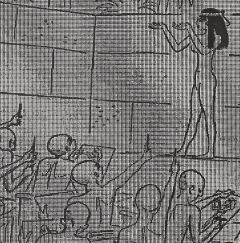
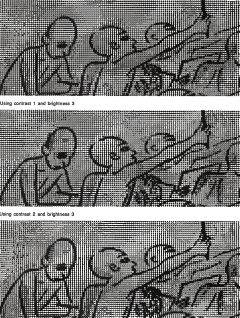

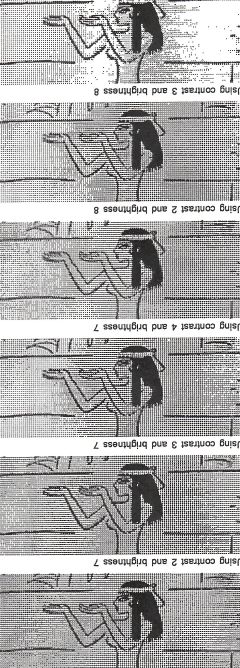
Who is the subject and who is the object?
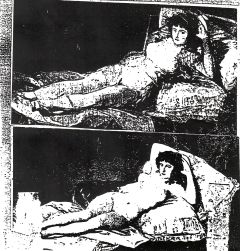
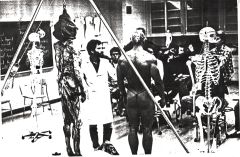
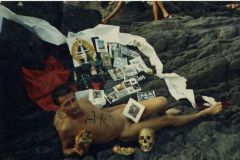
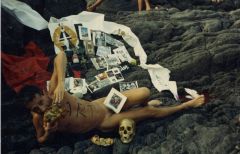
The Plexus Can is a metaphoric artobject, a message to be coded and decoded in an endless process of description. A metaphorical interpretation will be more useful for the reading of a Plexus Can. As a serpent eating its own tail, A Plexus Can is transforming itself in the process.
Each analysis of an art work has its own historical world related to a particular time and space.
I created in the 80's for the material culture of the 90's, the 100 PlexusCans as a statement against the swiftly changing in the artworld, to trade art works as commodities, bought and sold, within an expanding and accelerating speculative market system.
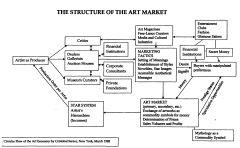
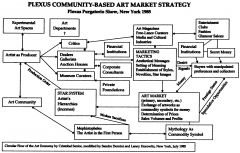
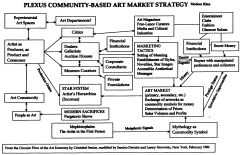

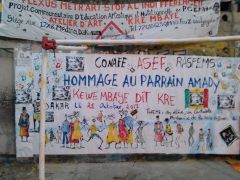



I am still facing the challenge in progress of filling the 100 Plexus Plexus Campboll's Soup Cans Limited Editions.
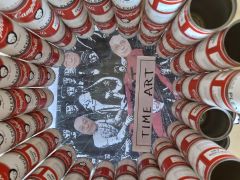
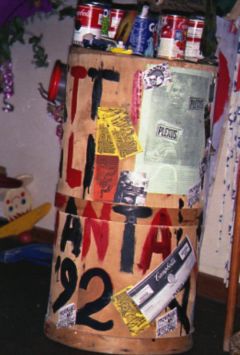
I dedicated the number zero of my Plexus Campboll's Soup Cans Limited Editions ato David W. Ecker, founder of the ISALTA- International Society for the Advancement of Living Traditions in Arts, and chairman of the NYU PhD. Committee of Sandro Dernini with John V. Gilbert, Chairman of the NYU Music and Music Professions Department and Angiola Churchill, Chairman of the NYU Art and Art Professions Department.
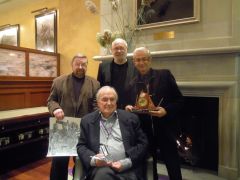

THE VOYAGE CONTINUES
